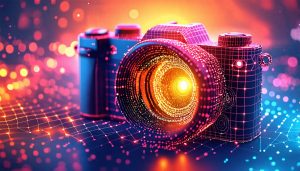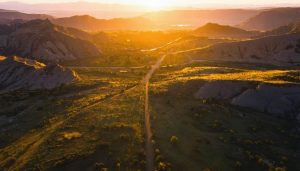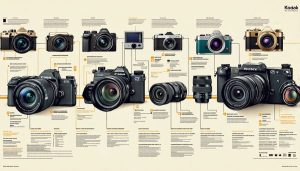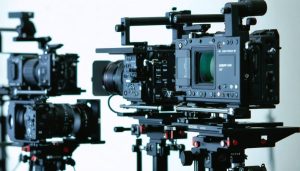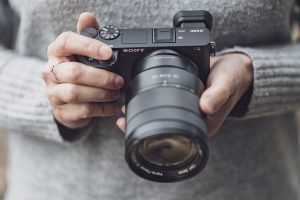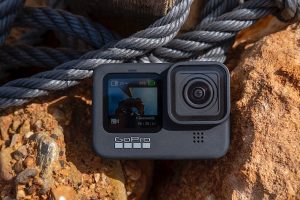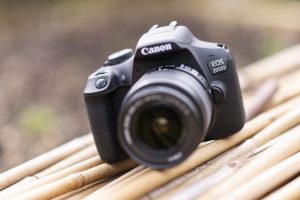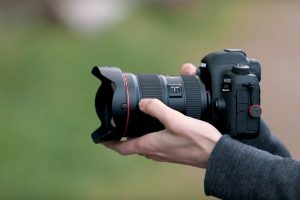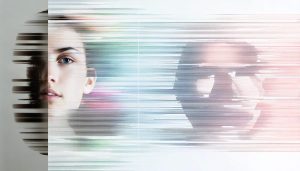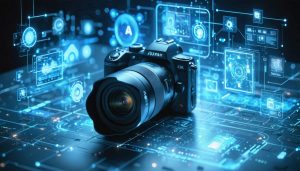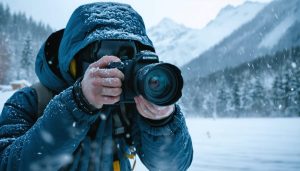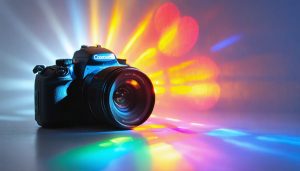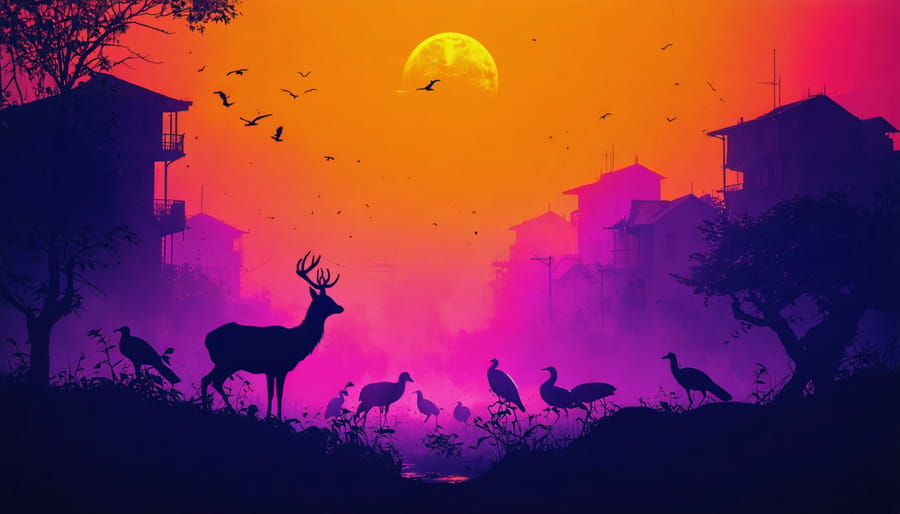
Infrared camera sensors unveil an invisible world of thermal energy, revolutionizing how we capture and interpret light beyond human vision. By detecting heat signatures instead of visible light, these specialized camera sensor technology transforms everyday scenes into compelling thermal landscapes where warmer objects glow brighter while cooler elements recede into darker tones.
Unlike traditional digital sensors that filter out infrared light, these specialized sensors embrace the infrared spectrum between 700-1400 nanometers, revealing heat patterns, structural defects, and hidden details invisible to the naked eye. Whether you’re an architectural photographer documenting building insulation, a wildlife enthusiast tracking nocturnal creatures, or a creative artist exploring new visual perspectives, infrared imaging opens up extraordinary possibilities for both technical and artistic applications.
This breakthrough technology has evolved from its military and scientific origins to become an increasingly accessible tool for photographers, offering unique creative opportunities while serving practical applications in fields ranging from home inspection to medical imaging. The ability to see and capture thermal signatures has transformed how we understand and document the world around us, making invisible energy patterns visible through the lens of modern photographic innovation.
The Science Behind Infrared Sensors
Infrared Light Detection
At the heart of infrared photography lies the sensor’s ability to detect and process infrared radiation, which occurs at wavelengths longer than visible light. When infrared light hits the sensor, specialized photodiodes convert this invisible radiation into electrical signals that can be processed into a digital image.
Most infrared camera sensors use an array of these photodiodes coated with materials specifically designed to be sensitive to infrared wavelengths, typically in the range of 700 to 1200 nanometers. Each photodiode acts like a tiny bucket, collecting infrared photons during exposure. The more infrared light that reaches the sensor, the stronger the electrical signal generated.
To ensure accurate detection, manufacturers incorporate several sophisticated components. A cold filter shields the sensor from unwanted heat signatures, while specialized microlenses help focus the infrared radiation onto the photodiodes. Some advanced sensors also utilize quantum well infrared photodetectors (QWIPs) technology, which can detect even minute variations in infrared radiation.
The sensor’s processing unit then converts these electrical signals into digital data, applying various algorithms to enhance contrast and reduce noise. Modern infrared sensors can distinguish between different wavelengths of infrared light, allowing them to create detailed thermal maps or capture the unique infrared signatures reflected by various materials and surfaces.
This technology enables photographers to reveal hidden details in their subjects, from heat patterns in wildlife photography to the striking appearance of foliage in landscape shots.
Sensor Architecture
Modern infrared camera sensors employ several sophisticated digital sensor designs to capture the invisible infrared spectrum. The two primary architectures you’ll encounter are cooled and uncooled sensors, each serving different purposes and applications.
Cooled sensors use specialized cooling systems, typically maintaining temperatures around -200°C, to minimize thermal noise and achieve superior sensitivity. These sensors excel in scientific and military applications where precise temperature detection is crucial. While they offer exceptional image quality, their size, cost, and power requirements make them impractical for everyday photography.
Uncooled sensors, particularly microbolometer arrays, are more common in consumer and prosumer IR cameras. These sensors detect infrared radiation through temperature changes in their material, usually vanadium oxide or amorphous silicon. When infrared radiation hits the sensor, it heats the material, changing its electrical resistance. This change is then measured and converted into an image.
Modern uncooled sensors often incorporate advanced features like temperature compensation and automatic calibration. Some designs use innovative pixel structures, such as honeycomb patterns, to maximize sensitivity while maintaining compact dimensions. Manufacturers also employ various filtering techniques to isolate specific IR wavelengths, allowing photographers to capture different “colors” of infrared light for creative effects or scientific documentation.

Applications in Modern Photography
Night Vision Photography
Night vision photography has revolutionized our ability to capture images in near-total darkness, and it’s all thanks to infrared camera sensors. These specialized sensors are particularly sensitive to infrared light, which is abundant even when visible light is scarce. This allows photographers to capture stunning images in conditions that would normally be impossible for traditional cameras.
The magic happens because IR sensors can detect the heat signatures emitted by objects and living beings, even in pitch-black conditions. When shooting in night vision mode, the camera typically uses a built-in IR illuminator that bathes the scene in invisible infrared light. This light bounces off subjects and returns to the sensor, creating a detailed image that appears surprisingly bright and clear.
What makes night vision photography particularly fascinating is its unique aesthetic. Images often appear in monochrome, with brighter areas representing warmer objects and darker areas showing cooler elements in the scene. Living subjects tend to glow against darker backgrounds, creating an ethereal effect that’s become iconic in wildlife photography and surveillance applications.
For photographers venturing into night vision territory, it’s important to note that different IR sensors offer varying levels of sensitivity. Professional-grade cameras might use cooled sensors for maximum sensitivity, while consumer models typically employ uncooled sensors that still provide impressive results. The technology has become increasingly accessible, with many modern security cameras and some smartphones now incorporating basic IR capabilities for low-light photography.
The applications are diverse, from capturing nocturnal wildlife behavior to creating artistic nighttime landscapes, making IR sensors an invaluable tool in modern photography’s arsenal.
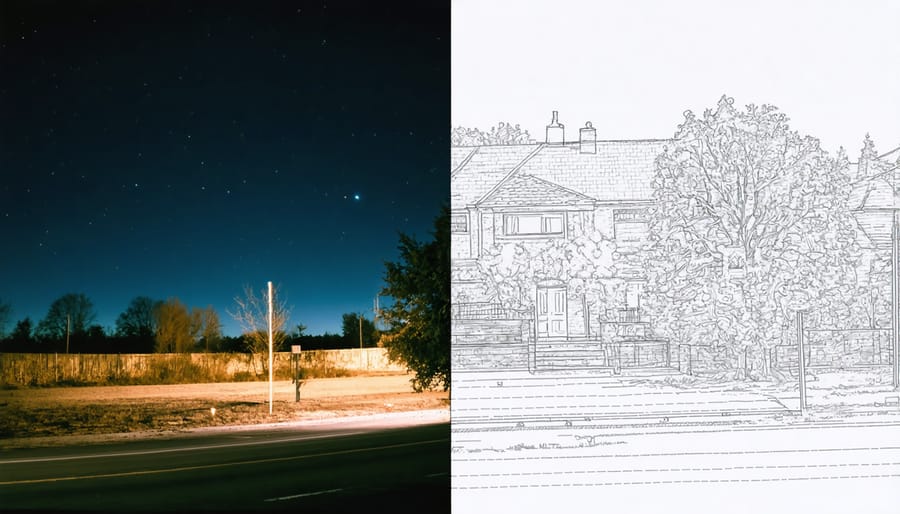
Thermal Imaging
Thermal imaging has revolutionized how we capture and visualize heat signatures, opening up fascinating creative possibilities for photographers. By detecting infrared radiation emitted by objects based on their temperature, thermal cameras create striking visual representations where warmer areas appear brighter or in warmer colors, while cooler regions show up in darker or cooler tones.
Photographers use thermal imaging in various creative ways, from capturing unique portraits that reveal heat patterns in faces to documenting wildlife at night without disturbing them. Architecture photographers particularly benefit from this technology, as it helps visualize heat loss in buildings and create compelling abstract compositions based on temperature variations.
The artistic applications are equally intriguing. By combining traditional photography with thermal imaging, photographers create surreal double exposures that blend visible light and heat signatures. Urban exploration photographers use thermal cameras to capture the “hidden warmth” of city life, revealing the thermal footprints left by people and machinery.
One popular technique involves using thermal imaging to photograph landscapes at dawn or dusk, when temperature contrasts are most pronounced. Water bodies, which retain heat differently than surrounding land, create particularly dramatic thermal landscapes. Similarly, industrial subjects offer compelling thermal compositions, with operating machinery and cooling systems producing dynamic temperature patterns.
For nature photographers, thermal imaging provides unique perspectives on animal behavior, showing how creatures regulate their body temperature or tracking their movements through thermal traces left behind. This technology has also found its way into experimental art, where photographers create abstract compositions based purely on heat distributions and temperature gradients.
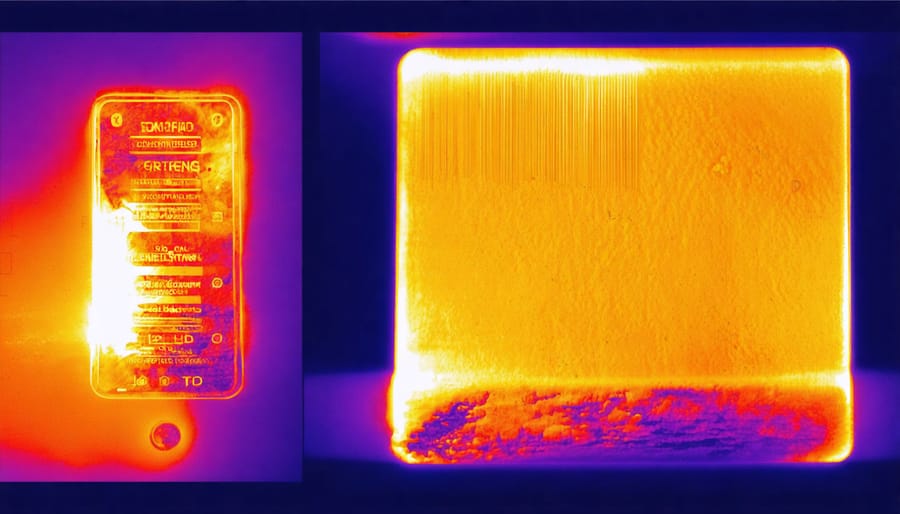
Choosing an IR-Capable Camera
Key Features to Consider
When selecting an infrared camera sensor, several crucial features demand your attention. Resolution is paramount – higher megapixel counts offer more detail, though remember that IR photography doesn’t always require the same resolution as visible light photography. The sensor’s quantum efficiency at IR wavelengths is equally important, determining how well it captures infrared light.
Look for a camera with robust camera settings optimization capabilities, particularly manual exposure controls and custom white balance options. These features are essential for achieving the distinctive look of infrared photography.
The presence or absence of an internal IR cut filter is another critical consideration. Some cameras come with removable filters, offering greater flexibility, while others are specifically modified for IR photography. Consider the wavelength sensitivity range – typical IR cameras operate between 700-1200nm, with different ranges producing varied artistic effects.
Don’t overlook practical features like live view capability and weather sealing. Live view helps compose shots more accurately since IR light behaves differently from visible light, while weather protection is valuable for outdoor photography. Battery life becomes especially important during long exposure shots, which are common in IR photography.
Finally, consider the compatibility with IR-specific lenses and filters. Some lenses perform better than others in IR photography, exhibiting fewer hotspots and better focus accuracy.
Common Limitations
While infrared camera sensors offer unique creative possibilities, they do come with several notable limitations that photographers should consider. The most significant challenge is the “hot spot” phenomenon, which appears as a bright circular area in the center of images, particularly when using wider-angle lenses. This occurs due to internal reflections between the sensor and lens coating.
Temperature sensitivity can also impact performance, as IR sensors need to maintain a stable operating temperature for consistent results. In very hot conditions, this might require additional cooling systems or shorter shooting sessions. Weather conditions like humidity and fog can also interfere with IR photography, as water particles in the air can scatter infrared radiation.
Cost remains another considerable limitation, as specialized IR-modified cameras and lenses typically command premium prices. Additionally, most IR sensors have lower resolution compared to their visible-light counterparts, which can affect image quality, especially in challenging lighting conditions.
Auto-focusing can be problematic because infrared light focuses at a different point than visible light. This often requires manual focus adjustments or the use of specially calibrated lenses. Color reproduction also presents challenges, as IR images require significant post-processing to achieve desired effects, and results can be unpredictable for beginners.
Lastly, IR sensors may struggle with certain modern coating technologies used in windows and filters, which can block infrared light and limit shooting opportunities in urban environments.
Future of IR Sensor Technology
The future of IR sensor technology is shaping up to be extraordinarily exciting, building upon the remarkable evolution of camera technology we’ve witnessed so far. One of the most promising developments is the emergence of quantum dot infrared sensors, which promise to deliver unprecedented sensitivity and resolution while operating at higher temperatures than traditional sensors.
Manufacturers are working on developing smaller, more efficient sensors that can be integrated into everyday devices. Imagine smartphone cameras that can switch seamlessly between visible and infrared modes, opening up new creative possibilities for mobile photographers. These innovations aren’t just about size – they’re about making IR photography more accessible to everyone.
Machine learning and AI are also revolutionizing how IR sensors process and interpret data. New algorithms can enhance image quality, reduce noise, and even help photographers identify optimal shooting conditions for infrared photography. Some emerging systems can automatically adjust sensor parameters based on environmental conditions, making it easier for photographers to capture stunning IR images without extensive technical knowledge.
Another exciting trend is the development of multi-spectral IR sensors that can capture different infrared wavelengths simultaneously. This technology could allow photographers to create images with adjustable IR effects in post-processing, similar to how we currently work with RAW files in visible light photography.
We’re also seeing progress in thermal resolution and frame rates, with new sensors capable of capturing high-speed IR footage at previously impossible frame rates. This advancement is particularly valuable for wildlife photographers and scientific applications, where quick movement needs to be frozen in infrared.
Looking ahead, we can expect to see more affordable consumer-grade IR cameras, improved battery efficiency, and better integration with existing photography workflows. The barrier to entry for infrared photography is gradually lowering, and these technological advances are making this fascinating field more approachable for enthusiasts while providing professionals with increasingly powerful tools for their creative vision.
Infrared camera sensors have revolutionized the way we capture and experience photography, offering creative possibilities that extend beyond the visible spectrum. Throughout this exploration, we’ve discovered how these remarkable sensors work by detecting thermal radiation and converting it into stunning imagery, opening up new horizons for both amateur photographers and professionals alike.
From their practical applications in night photography and artistic expression to their vital role in scientific research and industrial inspection, infrared sensors have proven themselves invaluable across numerous fields. We’ve seen how these sensors can reveal hidden details in nature photography, create ethereal landscape shots, and provide crucial data in technical applications.
For photographers considering venturing into infrared photography, remember that success lies in understanding your equipment’s capabilities and limitations. Start with a converted camera or high-quality IR filter, experiment with different wavelengths, and practice in various lighting conditions to master this unique form of photography. The learning curve might be steep, but the creative rewards are worth the effort.
As technology continues to advance, we can expect even more sophisticated infrared sensors with improved sensitivity, resolution, and functionality. Whether you’re interested in creating dreamlike landscapes, exploring scientific applications, or pushing the boundaries of your creative expression, infrared photography offers a fascinating world of possibilities waiting to be discovered.

